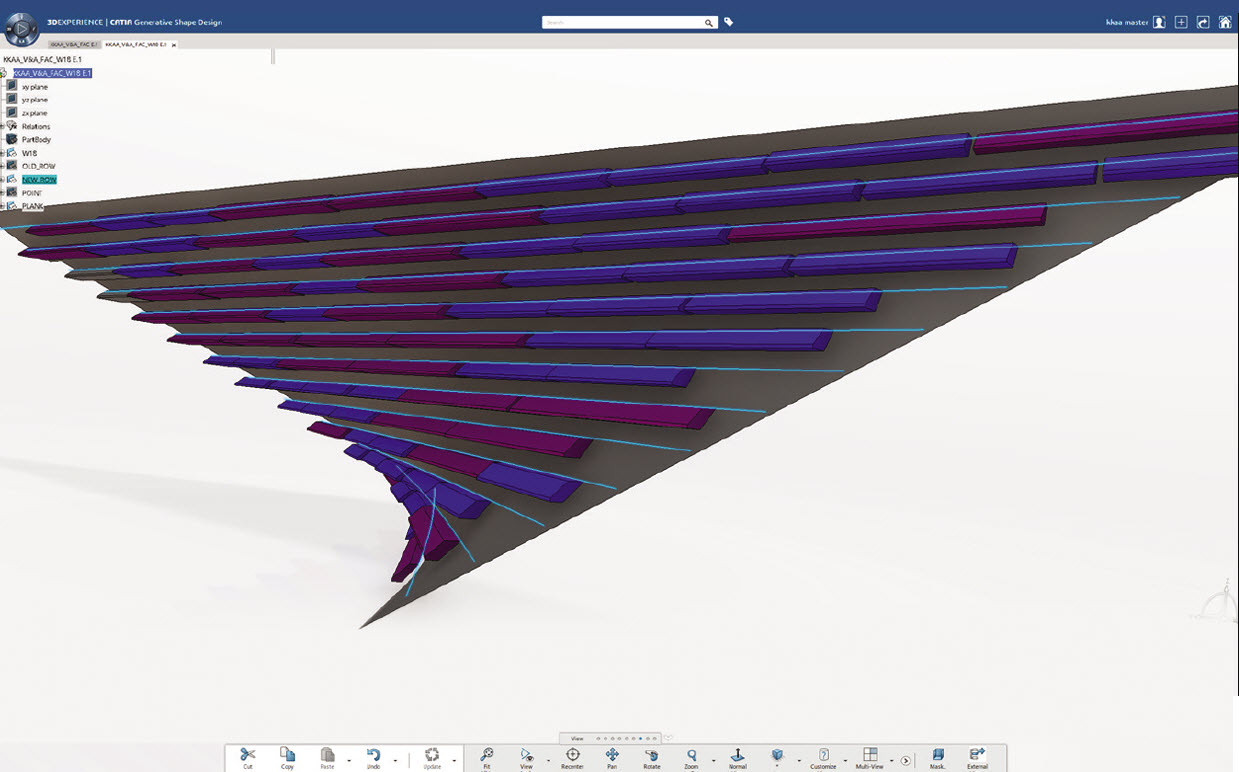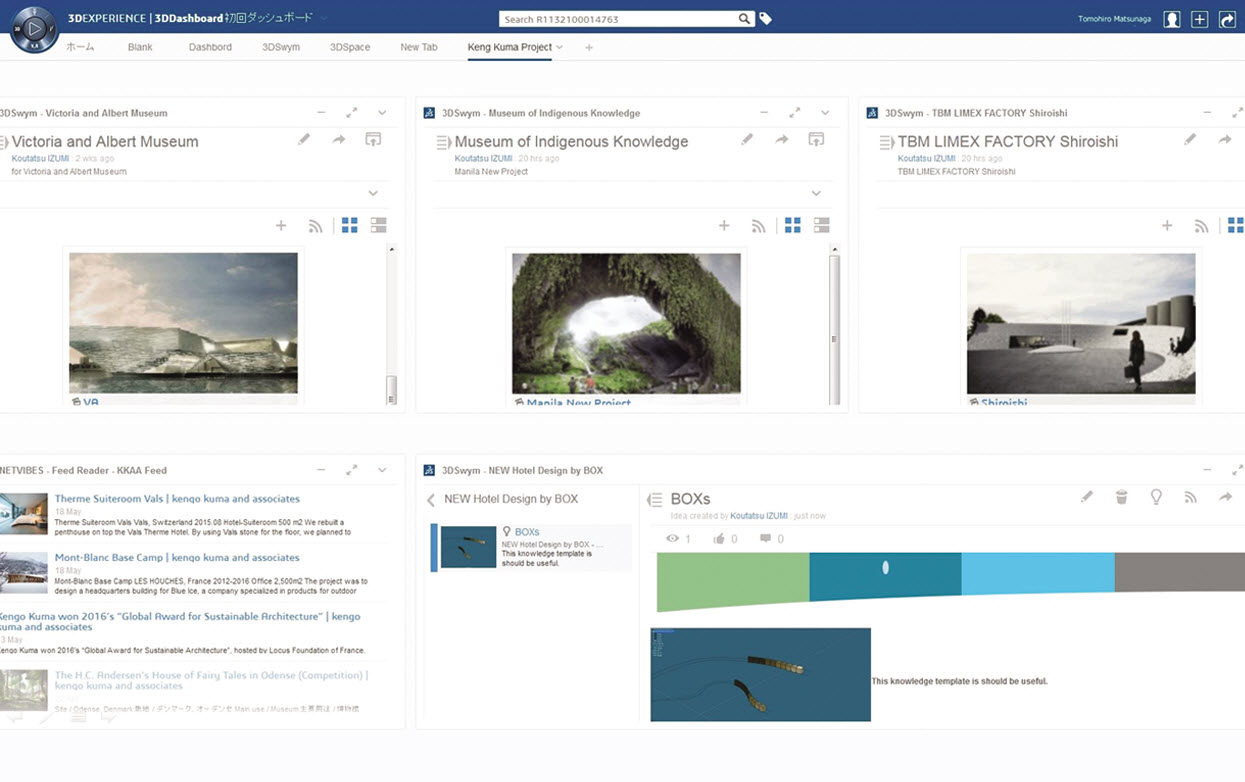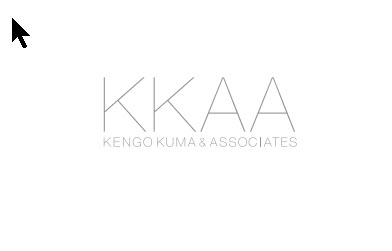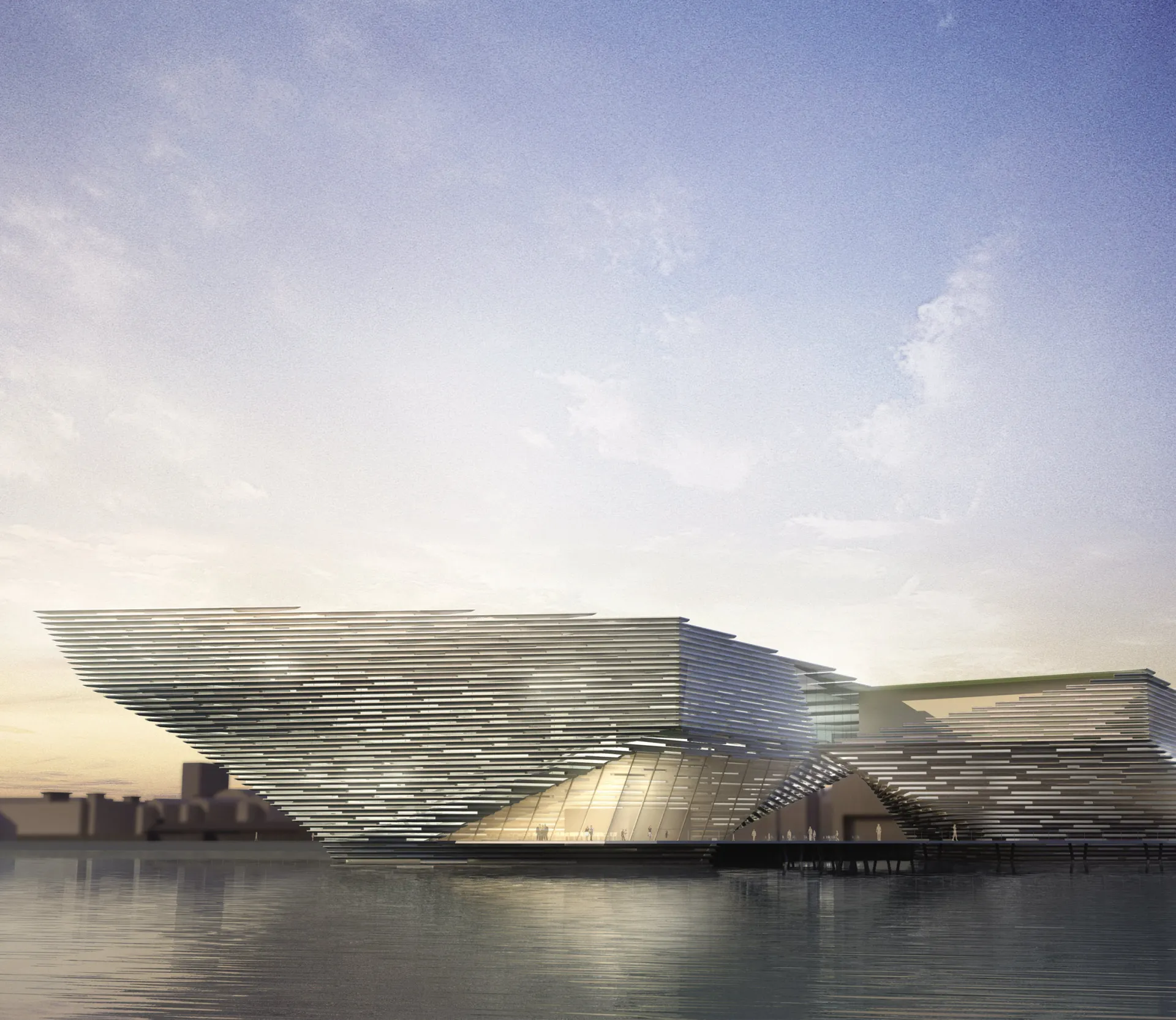Computerized architecture helps bring out the beauty of natural materials
Kengo Kuma, a Japanese architect with a body of work that surpasses national boundaries, has made a name for himself with his innovative use of shapes, unique creative voice, and focus on organic materials like wood and bamboo. From Kuma’s perspective, computerized architecture plays a vital role in making that vision a reality. “The CAD technology and 3D tools that have made their way into the architectural design world are pointing us toward a renewed focus on materials,” Kengo Kuma, architect and founder of Kengo Kuma and Associates said. “With computers, we can dream up any architectural space we want and convert ideas into actual drawings. At the same time, we rely more and more on actual organic materials to get the job done. However, it’s really hard to use these materials as there’s so much variability and you have to deal with different shape and size restrictions,” he explained. “The challenge is figuring out how to get all these materials to fit together into a functional structure. That’s where computers are so essential. We’ve shaped concrete into viable structures without ever needing advanced computer technology, but you need computer technology to bring organic materials to architectural fruition.”
You need computer technology to bring organic materials to architectural fruition.
Computerization makes organization more creative
Kuma’s Tokyo office alone is currently home to approximately 170 staff members. Although Kuma monitors the status of all the firm’s projects, he still has to find ways to help his employees maximize their creative capabilities. Without that group energy it would be hard for the organization to sustain its steady stream of inventive, original initiatives. “We focus on making our organization as flat as possible; we want everyone to feel responsible for themselves,” Kuma explained. “To create that kind of environment and make employees feel confident about taking the lead on a project, we have to give staff members the ‘weapons’ they need. Building Information Modeling (BIM), which allows them to create a virtual 3D representation with associated data, is one of those weapons. Nowadays, you need to keep your budget in mind from day one, from the design stage onward, gathering feedback and making adjustments as you go along, instead of trying to balance the budget at the quoting stage. Without BIM, designers have trouble keeping tabs on costs and meeting deadlines.”
Kuma’s offices are expanding, taking on large-scale projects with greater regularity, including more public-sector work. With that growth, however, comes another challenge: making sure that the diverse range of projects retains the essence of the “Kengo Kuma” design philosophy. In Matsunaga’s eyes, the integrated nature of the 3DEXPERIENCE platform and the possibility to access it on cloud can help the firm meet its new challenges. “The office still has a lot of old-fashioned, ‘analog’ elements, so I’m excited about using the cloud to share information and expertise,” he said. “When Kuma approves a process, for example, we can share it with project stakeholders as a set of history data. That makes it so much easier to roll out his vision across our entire organization, including our locations in France and China. The technology lets us gather and share information on past projects, too. With those kinds of resources, we can pool our assets and expertise into a thorough, integrated structure that all employees, even our newest co-workers, can benefit from.”
While KKAA currently uses different software for various procedures, with the 3DEXPERIENCE platform, the firm aims to secure compatibility with other BIM tools and streamline the entire design process, including the tasks it assigns to affiliates, by integrating all activities on a single platform. In addition to supporting the firm’s reputation for unconventional ideas and a dynamic creative environment, Meijo is also excited about what the 3DEXPERIENCE platform can do in terms of overall coordination. “We always had trouble smoothly transferring 3D data from our designers to the construction and specialty contractors,” he said. “The 3DEXPERIENCE platform gives us an opportunity to handle large-scale composite models, detailed drawing models, and everything in between. With that kind of versatility, we can eventually give every worksite uniform sets of data, while making maintenance and repairs much easier to deal with, something that will benefit our clients as well.”
The 3DEXPERIENCE platform gives us an opportunity to handle largescale composite models, detailed drawing models, and everything in between.

More accuracy and stability
Kengo Kuma & Associates (KKAA) recently implemented the 3DEXPERIENCE platform and its Design for Fabrication industry solution experience for the AEC industry, to replace the 3D software they were using for design development. Design for Fabrication’s CATIA application was one of the key reasons the company was impressed by this solution. Toshiki Meijo, chief of design division, KKAA, said the decision came down to accuracy and data volume. “Some software didn’t meet our accuracy requirements, while others got slower and less responsive when the project involved large amounts of data,” he explained. “As projects got larger and more complex, so did the challenges.”
For Meijo, Design for Fabrication has made a big difference through two key benefits: revision history and performance. “With our old software, it was hard to figure out why employees made changes and what changes they made to arrive at the final version. There was no way to go back through previous modifications to see how things had changed,” Meijo said. “CATIA gives us the ability to do that. If Kuma says that he wants to make a little change to an earlier design stage, for example, with this application it’s easy to do that. The performance is great, too; even when you’re working on a data-heavy project, the software never lags or crashes.”
Tomohiro Matsunaga, KKAA lead engineer for 3D modeling, echoed Meijo’s praise for the application’s technical prowess. Design for Fabrication gives you an amazing amount of freedom when it comes to parametric modeling,” he said. “It’s so nice to be able to bring everything together in parametric terms. It’s almost like there’s nothing you can’t make. The software is always stable, even when you’re working with many different parameters. Data never weighs the performance down, either, which is a big plus,” Matsunaga said.
One project where KKAA used CATIA for high-level parametric modeling was the V&A Museum of Design Dundee, currently under construction in Scotland. To create the façade that would shape the design’s distinctive outward appearance with precast concrete called planks, employees had to optimize the necessary shapes and limit the number of odd-length ones populating the design. According to Meijo, “CATIA let us optimize the 3D model in parametric terms, making it possible to cut way down on the number of irregular parts.”
I’m excited about using 3DEXPERIENCE on the cloud to share information and expertise. It makes it so much easier to roll out Kengo Kuma’s vision across our entire organization.


Focus on Kengo Kuma & Associates
Japanese architectural design firm
Some recent projects: Ginza Kabukiza in Tokyo, Nagaoka City Hall Aore in Nigata, China Academy of Art’s Folk Art Museum in Hangzhou, People’s Republic of China, Saint-Denis Pleyel Emblematic Train Station in Paris (Presently under construction), New National Stadium in Tokyo (Presently under construction)
Employees:200
Headquarters: Tokyo, Japan
For more information www.kkaa.co.jp



